Archives
- By thread 5363
-
By date
- June 2021 10
- July 2021 6
- August 2021 20
- September 2021 21
- October 2021 48
- November 2021 40
- December 2021 23
- January 2022 46
- February 2022 80
- March 2022 109
- April 2022 100
- May 2022 97
- June 2022 105
- July 2022 82
- August 2022 95
- September 2022 103
- October 2022 117
- November 2022 115
- December 2022 102
- January 2023 88
- February 2023 90
- March 2023 116
- April 2023 97
- May 2023 159
- June 2023 145
- July 2023 120
- August 2023 90
- September 2023 102
- October 2023 106
- November 2023 100
- December 2023 74
- January 2024 75
- February 2024 75
- March 2024 78
- April 2024 74
- May 2024 108
- June 2024 98
- July 2024 116
- August 2024 134
- September 2024 130
- October 2024 141
- November 2024 171
- December 2024 115
- January 2025 216
- February 2025 140
- March 2025 220
- April 2025 233
- May 2025 239
- June 2025 303
- July 2025 176
-
Digital transformation on the CEO agenda
the Daily read
Get better, faster .
Share this email 



AN ARTICLE A DAY, PICKED BY OUR EDITORS 
Digital transformation. It’s a phrase we come across a lot, but what does it really mean—and what does a successful digital transformation look like? “The point of digital transformation isn’t to become digital. It’s actually to generate value for the business,” says McKinsey senior partner, Rodney Zemmel, in a new episode of The McKinsey Podcast. Tune in and get up-to-date on what CEOs and other leaders should know as they embark on the transformation journey, including metrics that matter, common obstacles and how to navigate them, opportunities in tech talent, and more. — Joyce Yoo, digital editor, New York 
Digital transformation on the CEO agenda Successful digital transformations may not be as elusive as you think. The best CEOs know up front what success looks like—and what stands in their way. Get better, faster 

Quote of the Day —Tamara Charm, McKinsey partner, on US consumer sentiment and behavior in a recent episode of the McKinsey on Consumer and Retail podcast 
Chart of the Day 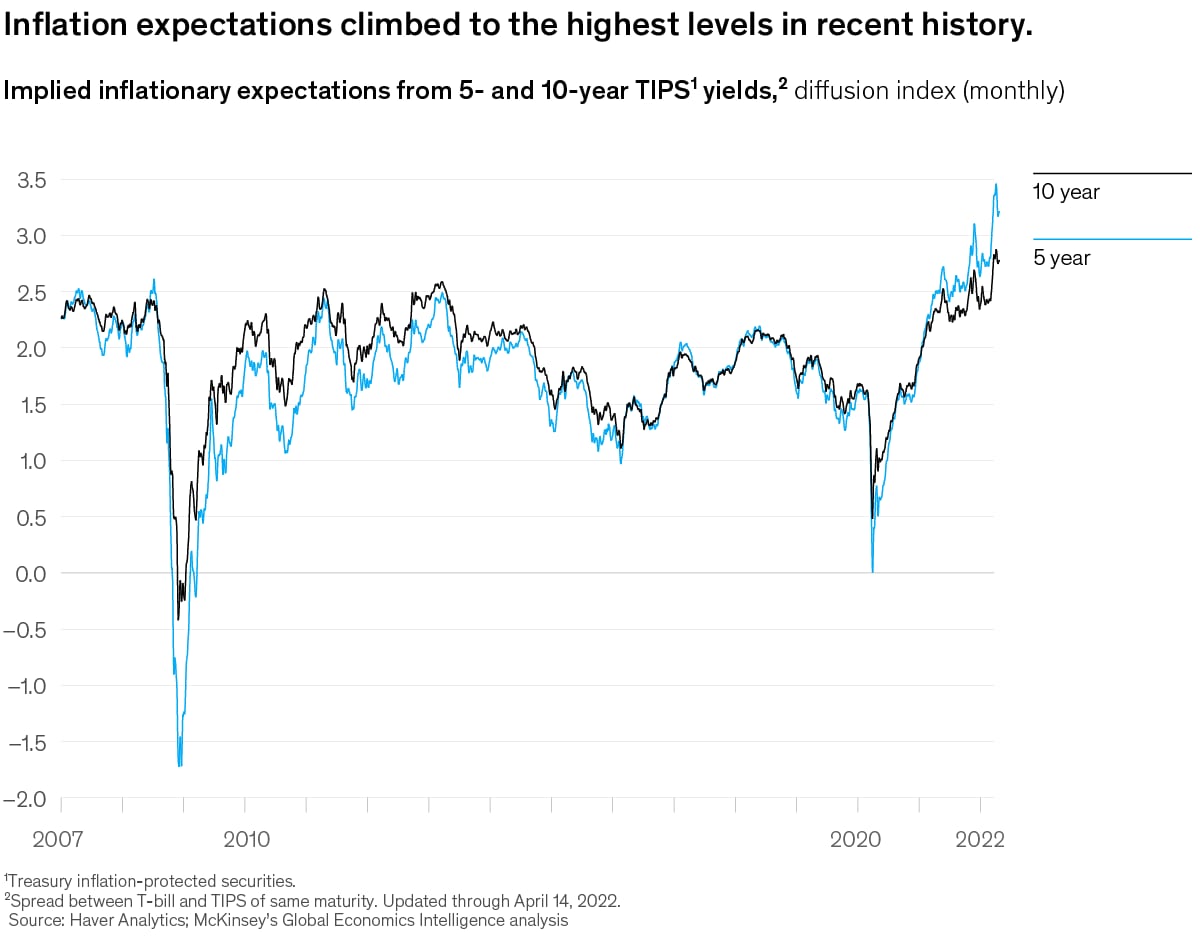
See today’s chart 
Also New 

Prepare now for the future of industrial services A 600-executive survey reveals how services organizations can adapt to a remote-first world by revamping their operating models and carefully tailoring commercial models to match. Get ready 
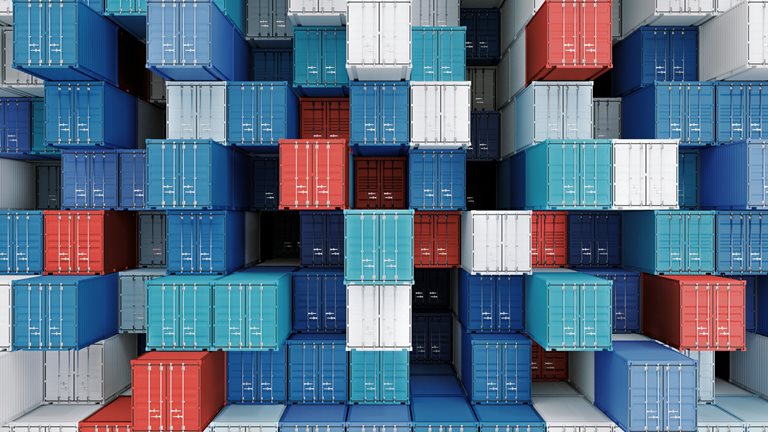

Global Economics Intelligence executive summary, April 2022 Amidst high inflation and the continuing war in Ukraine, strong demand persists; forecasting institutions trim growth estimates. Understand worldwide trends 


The McKinsey Crossword: May Flowers | No. 75 4-Down: Appreciate what is often ignored. Can you solve it? Play now 


Follow our thinking 



Share these insights Did you enjoy this newsletter? Forward it to colleagues and friends so they can subscribe too.
Was this issue forwarded to you? Sign up for it and sample our 40+ other free email subscriptions here.This email contains information about McKinsey’s research, insights, services, or events. By opening our emails or clicking on links, you agree to our use of cookies and web tracking technology. For more information on how we use and protect your information, please review our privacy policy. You received this email because you subscribed to the Daily Read newsletter. Manage subscriptions | Unsubscribe Copyright © 2022 | McKinsey & Company, 3 World Trade Center, 175 Greenwich Street, New York, NY 10007
by "McKinsey Daily Read" <publishing@email.mckinsey.com> - 06:23 - 13 May 2022 -
Can the automotive industry scale fast enough?
McKinsey&Company
Speed up .
Share this email 



New from McKinsey Quarterly 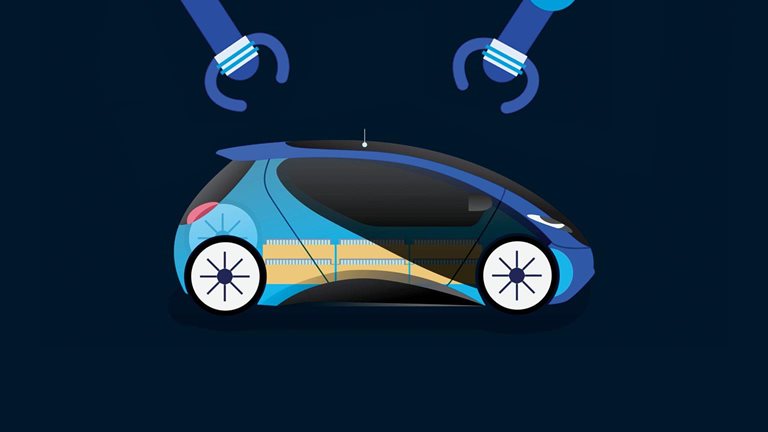
Can the automotive industry scale fast enough? The rapidly increasing uptake of electric vehicles could transform the automotive ecosystem and promote even greater innovations. For that to happen, two imperatives need attention now. Speed up 



Related Reading 
Why the automotive future is electric 
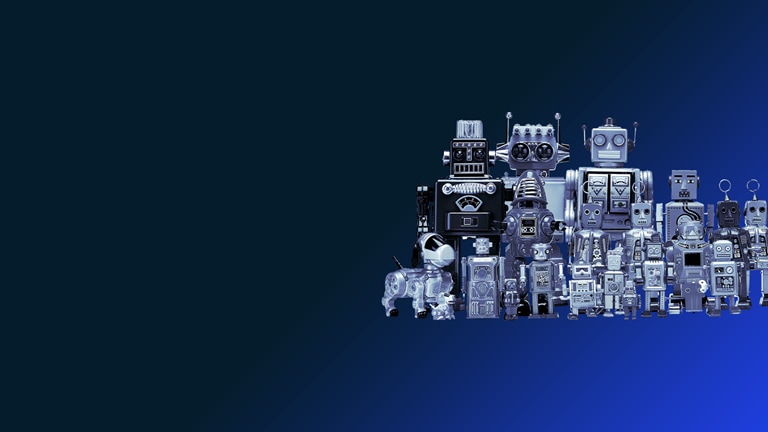
Get up to speed with McKinsey Themes 


Follow our thinking 


McKinsey Insights - Get our latest
thinking on your iPhone, iPad, or Android


Share these insights Did you enjoy this newsletter? Forward it to colleagues and friends so they can subscribe too.
Was this issue forwarded to you? Sign up for it and sample our 40+ other free email subscriptions here.This email contains information about McKinsey’s research, insights, services, or events. By opening our emails or clicking on links, you agree to our use of cookies and web tracking technology. For more information on how we use and protect your information, please review our privacy policy. You received this email because you subscribed to our McKinsey Quarterly alert list. Manage subscriptions | Unsubscribe Copyright © 2022 | McKinsey & Company, 3 World Trade Center, 175 Greenwich Street, New York, NY 10007
by "McKinsey Quarterly" <publishing@email.mckinsey.com> - 10:05 - 13 May 2022 -
How can real estate predict, model, and measure climate risk? A primer.
The Shortlist
A new twist on ‘location, location, location’ .
Share this email 



Our best ideas, quick and curated | April 22, 2022 View in browser 
This week, the hazards and opportunities for real estate as the world tackles climate change. Plus, why boards should be more strategic about cloud, and Terry Crews, the Brooklyn Nine-Nine actor and former NFL player, explores how “tough guys” can find strength in vulnerability. 
For what it’s worth. The value of real estate has long been set primarily by its proximity to the center of action in any town or city. Today, risks posed by climate change are changing how real-estate value is calculated. These risks may be physical, as markets consider hazards posed by a changing climate. There are also transition risks, including changes to the economy, to regulations, and in consumer behavior as the world targets net zero. The real-estate industry is increasingly realizing that these risks have implications for long-term values, revenue, operating costs, and capitalization rates. Obvious, and not so obvious. Some climate risks are easier to see, like those posed to properties in coastal settings where flooding could cause physical damage. But it’s trickier for real estate to learn to predict, model, and measure harder-to-perceive risks. For example, there could be declines in sectors or markets tied to traditional energy sources that could lead to depressed occupancy and lower rents. Significant capital investment may be required to meet local energy efficiency and emissions standards; there may also be new tenant demands as companies aim to comply with new regulations governing their own carbon footprints. Build better. One way to mitigate climate-change risks is to construct buildings in more efficient ways that create fewer emissions. It’s no simple task: construction is directly or indirectly responsible for almost 40 percent of global carbon-dioxide emissions from fuel combustion and 25 percent of greenhouse-gas emissions across the economy. These statistics may be surprising, as we tend to think of moving objects, such as cars and airplanes, as potential “gas guzzlers,” not static buildings. Decarbonize existing buildings. With roughly 80 percent of the predicted building stock for 2050 already in existence today, there is a huge need to retrofit. It won’t be cheap: the average annual spending on physical assets between 2020 and 2050 would be $1.7 trillion per year. The buildings sector would have to decarbonize by improving energy efficiency, for example, through the use of insulation and by replacing fossil fuel–powered heating and cooking equipment with low-emissions systems, among other interventions. Stakeholders across the value chain will have to collaborate to succeed. The industry will need to align incentives for stakeholders such as building owners, who invest capital, and tenants, who may see the benefits of reduced operating costs. Plenty of hands will be required to insulate and decarbonize buildings, resulting in a net gain of about half a million direct jobs by 2050. A new door opens. Climate-change risk poses many challenges to the real-estate sector, but it also opens up new opportunities. Firms can differentiate by offering buildings that use greener materials and are constructed in energy-conserving ways. Residents and tenants around the world are increasingly eager to live and work in spaces that consider the environment and their health and wellness. High-rise buildings will increasingly be built for mixed-use purposes, where floors in the same building will be used for offices, homes, and hotels. Real-estate companies that think deeply about how people want to live and work, and the values and community that matter to them most, will have the edge. — Katy McLaughlin 
OFF THE CHARTS Cloud lets you compete on skill rather than scale Cloud will help organizations to both reduce IT costs and support innovation through powerful emerging technologies. The existing and growing range of cloud services means that those companies—including new entrants—that do establish the right vision, governance, and operating model to leverage the cloud will compete on skill rather than scale. Yet only about 13 percent of boards are actively engaged in conversations about cloud, despite its tremendous potential value. For many boards, not knowing how to have strategic conversations about cloud is the biggest barrier to their involvement. 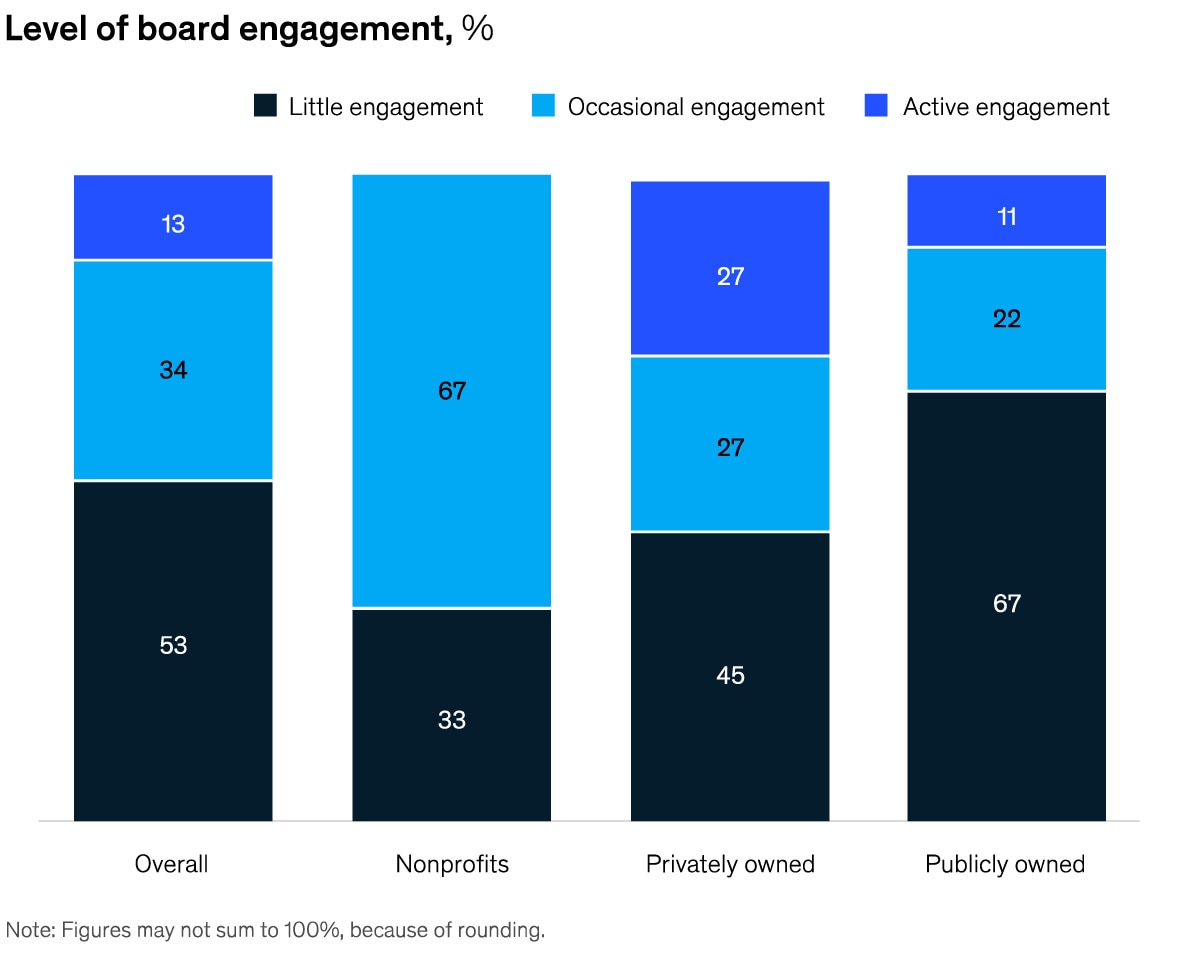
Check out our chart of the day here. 

PODCAST The rising risk of a global food crisis In the global food system, previous supply–demand scenarios were mostly encoded around weather and other supply-related events. In the past few years, the global pandemic has clearly tested, and in many cases proved, the resilience of the food system. But Russia’s invasion of Ukraine, one of the world’s six breadbasket regions, risks tilting the food system into global crisis. In this installment of The McKinsey Podcast, two McKinsey agriculture experts discuss the looming threat, what’s at stake, and what might be done to help. 
MORE ON MCKINSEY.COM Is your capital strategy ready for an investment wave? | The world will see a surge of investment in physical assets related to projects that decarbonize and renew critical infrastructure. Here’s how organizations can deliver on this capital influx with speed and efficiency. Better and faster: Organizational agility for the public sector | Agile leadership principles can transform how the public sector works, plans, and delivers to customers and constituents. Here’s how governments can pursue such a strategy. Mobility’s net-zero transition: A look at opportunities and risks | The transition to low-emission mobility requires not just a move away from internal-combustion-engine technologies but also the reengineering of value chains. McKinsey analysis shows how the shift to electric vehicles could create opportunities and risks for automakers around the world. 
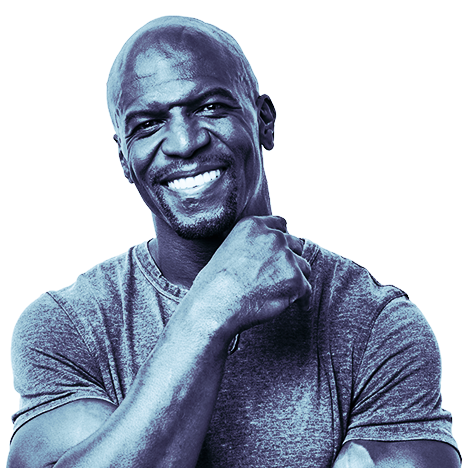
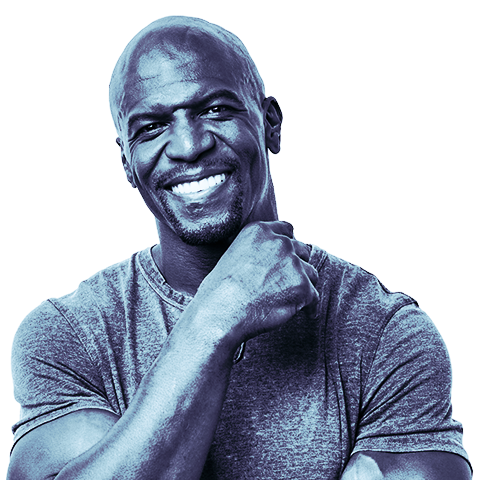
THREE QUESTIONS FOR Terry Crews In Tough: My Journey to True Power, Terry Crews, the Brooklyn Nine-Nine actor and former NFL player, explores how “tough guys” can find strength in vulnerability. This is excerpted from an edition of McKinsey Global Publishing’s Author Talks series. Why write this book, and why now? Tough is a journey of revelation for me. My whole life, I thought the definition of tough was totally opposite to what being tough actually is. When you find something out, you have a responsibility to tell your truth to others who may not know it. For me, writing a book is the best way to convey your thoughts and put everything out there as thoroughly and completely as you can without being taken out of context, which is a big thing that happens now on social media—people can take one thing and twist it to mean something else. The good thing about a book is that the people who decide to read it tend to be invested, and they can take in the whole of what you say, which is something that’s been lost, I think, in a lot of conversations. How did you used to define toughness? One thing I discovered in writing this book is that my definition of toughness was “cold.” It was the ability to shut emotion off. I’ve heard a quote—hopefully, I don’t mess it up—but it was about intense morality and how, if you have it, it makes a bad soldier. You have to turn off your moral compass to be a good soldier, so that you can do what needs to be done no matter who gets hurt or what goes on around you or how your world can crumble. That definition of tough had taken over, especially in the world of masculinity. I was involved in a very competitive world. From growing up among gang members and drug dealers all the way to sports and the NFL, I watched, and I became what I saw. It was about turning off your emotions, turning off what you’re feeling, turning off your pain compass. The revelation that came to me much later was that toughness is not the ability to throw a punch. One thing I say all the time is that you can either have success or revenge, but you can’t have both. Many men live their lives like they’re in a revenge movie, like it’s a fantasy where they’ve been wronged, and now they’re going to get back at every person who wronged them, one at a time. The problem is that success is about letting go. Success is not about getting back at people; it’s about finding a new way to live, about finding new areas and new things so that it doesn’t even matter what someone else does to you, because you’re already gone, you’re already in a new place. What should business leaders understand about being tough? I truly believe that competition is the opposite of creativity. Creativity is mixing two things together. The definition, at its core, is when someone finds one thing and then goes, “Wait a minute, if I put this in there, I have something new!” When you put yourself into something, you are automatically exercising creativity simply because that cause, or project, or team you join has never had you. When you collaborate with another person, you are going to come up with something special. That’s just the way creativity goes. But if you’re fighting with everyone—if you’re trying to beat everyone—creativity stops, and then judgment starts. I like to say judgment kills all creativity. Creativity stops because you’re working for perfection. You’re working against other people. You’re looking at other people’s papers. You’re trying to compare. This is called the sin of comparison—when what you have is never good enough, because you’re always looking at someone else’s stuff. You’re not collaborating, you’re competing. I like being on a show like Brooklyn Nine-Nine, where we can collaborate and we can make people laugh. Remember, when you’re doing comedy, the only rule is that you have to say yes. Especially in ad-libbing and especially with improv, you have to accept what the other person is saying for it to be funny. I love being this big, muscular guy in this comedy world, you know? I created a new thing, and because of that, it made me an original. I decided to just do that with everything: don’t worry, don’t fight against people, just collaborate and make something new. — Edited by Barbara Tierney Share this Q & A 



BACKTALK Have feedback or other ideas? We’d love to hear from you. 
Tell us what you think 

Follow our thinking 



Share these insights Did you enjoy this newsletter? Forward it to colleagues and friends so they can subscribe too.
Was this issue forwarded to you? Sign up for it and sample our 40+ other free email subscriptions here.This email contains information about McKinsey’s research, insights, services, or events. By opening our emails or clicking on links, you agree to our use of cookies and web tracking technology. For more information on how we use and protect your information, please review our privacy policy. You received this email because you subscribed to The Shortlist newsletter. Manage subscriptions | Unsubscribe Copyright © 2022 | McKinsey & Company, 3 World Trade Center, 175 Greenwich Street, New York, NY 10007
by "McKinsey Shortlist" <publishing@email.mckinsey.com> - 01:32 - 13 May 2022 -
In this new era of work, what will it take to make a future-ready office?
McKinsey&Company
Ten ways to reinvent headquarters .

Office politics In the news • Are we having fun yet? Big tech companies want their employees to come back to the office. Instead of punishing the cubicle shy, they are attempting to lure workers with bands, beer, and barbecue—and, for good measure, free pizza, gyros, coffee, T-shirts, and terrarium-making classes. Some researchers doubt that tunes and noshes will be all that convincing: in one ongoing survey of thousands of workers, most respondents want to come to an office only two or three times a week, while a third say that they never want to return at all. [NYT] • They doth protest too much. Employers are trying to reinstate in-office work by touting its supposed advantages, such as collaboration, mentoring, and company culture. But studies show that open offices are associated with less collaboration, the benefits of mentoring are unequally shared, and company culture may be code for a homogenous workforce. Companies should tout less and provide more proof that commutes and other in-person work inconveniences pay off. [Bloomberg] 
Yesterday’s financial-services headquarters are no longer fit for tomorrow. To future-proof flagship offices, banks and insurers should consider the larger forces reshaping their industry and redefine the purpose of their workplaces. 
On McKinsey.com • Fit for purpose. The largest banks and insurers have invested millions, and sometimes billions, of dollars in their headquarters—only to be faced with the question of whether anyone needs to come into the office at all. Digitization, the benefits of a diverse workforce, and fintech disrupters are changing what spaces are needed and how and when they are used. The answer for the financial services industry isn’t to bring workers back to the old office but to reorient headquarters around learning, inclusion, and entrepreneurial action. • Ten ways to win. McKinsey interviewed 30 internal and 16 external financial-services experts—the latter, leaders with roots in traditional banks and insurance organizations, some of whom now work for fintech companies. Their insights were distilled into a list of ten bold moves that banks and insurers can take to rethink their flagship offices. Hybrid solutions, such as wiring offices with cutting-edge tech, should support core missions, such as integrating a diverse cast of remote collaborators. Read the research to learn how to create environments that elevate what really matters to the industry now. — Edited by Katy McLaughlin Reimagine headquarters 
Was this forwarded to you? Sign up here. Or send us feedback — we’d love to hear from you. 

Follow our thinking 


This email contains information about McKinsey’s research, insights, services, or events. By opening our emails or clicking on links, you agree to our use of cookies and web tracking technology. For more information on how we use and protect your information, please review our privacy policy. You received this email because you subscribed to the On Point newsletter. Manage subscriptions | Unsubscribe Copyright © 2022 | McKinsey & Company, 3 World Trade Center, 175 Greenwich Street, New York, NY 10007
by "McKinsey On Point" <publishing@email.mckinsey.com> - 12:16 - 13 May 2022 -
Premium & Personalized—Upgrade Your Intel Subscription for Free
Premium & Personalized—Upgrade Your Intel Subscription for Free

Elevate Your Experience






Dear Md Abul,
These are exciting times at Intel. From upcoming processor launches to 5G collaborations around the globe and the latest partner innovations—we are busy shaping the future of your industry.
Stay on top of the latest news, views and Intel insights, with a personalized content subscription. Plus, unlock access to a premium Intel white paper, case study or solution brief across AI, 5G, cloud and beyond.
Here's how.

It’s that simple!
Update your profile now 
* Terms and conditions apply.
Intel is committed to respecting human rights and avoiding complicity in human rights abuses. See Intel’s Global Human Rights Principles. Intel’s products and software are intended only to be used in applications that do not cause or contribute to a violation of an internationally recognized human right.
© Intel Corporation. Intel, the Intel logo, and other Intel marks are trademarks of Intel Corporation or its subsidiaries.
Other names and brands may be claimed as the property of others.
This was sent to info@learn.odoo.com because you are subscribed to Offers & Promotions. To view and manage your email preferences or to unsubscribe from marketing-related emails from Intel, please click here.
© 2022 Intel Corporation
Intel Corporation, 2200 Mission College Blvd., M/S RNB4-145, Santa Clara, CA 95054 USA. www.intel.comPrivacy | Cookies | *Trademarks | Unsubscribe | Manage Preferences
by "Intel Corporation" <intel@plan.intel.com> - 11:05 - 12 May 2022 -
Decarbonizing the world’s industries: A net-zero guide for nine key sectors
the Daily read
Understand the options .
Share this email 



AN ARTICLE A DAY, PICKED BY OUR EDITORS 
As industries and governments around the globe look toward a net-zero future, the road to decarbonization will be a challenge, particularly for sectors that produce the majority of global greenhouse-gas emissions. But according to McKinsey research, opportunities for transformation are underway. A new collection highlights articles and reports from nine emissions-intensive industries—including automotive, oil and gas, agriculture and food, and more—on their work to combat climate change. Dive into these insights to get smart about what’s being done and what to expect in the future. — Joyce Yoo, digital editor, New York 
Decarbonizing the world’s industries: A net-zero guide for nine key sectors The sectors that produce the majority of global greenhouse-gas emissions face a steep challenge to decarbonize, but our research shows that solutions are within reach. In many cases, a transformation is well underway. This collection draws together articles and reports that lay out a pathway to net zero for nine emissions-intensive industries. Understand the options 

Quote of the Day “I think that’s the power of something like STEAM [science, technology, engineering, arts, math]. We’re able to value different skill sets, different disciplines, different perspectives, and then build something that then is additive and does better, rather than something that basically repeats the past.” —Anne-Marie Imafidon, mathematician, technologist, and co-founder of Stemettes, on democratizing technology in a, recent episode of the McKinsey Global Institute’s Forward Thinking podcast 
Chart of the Day 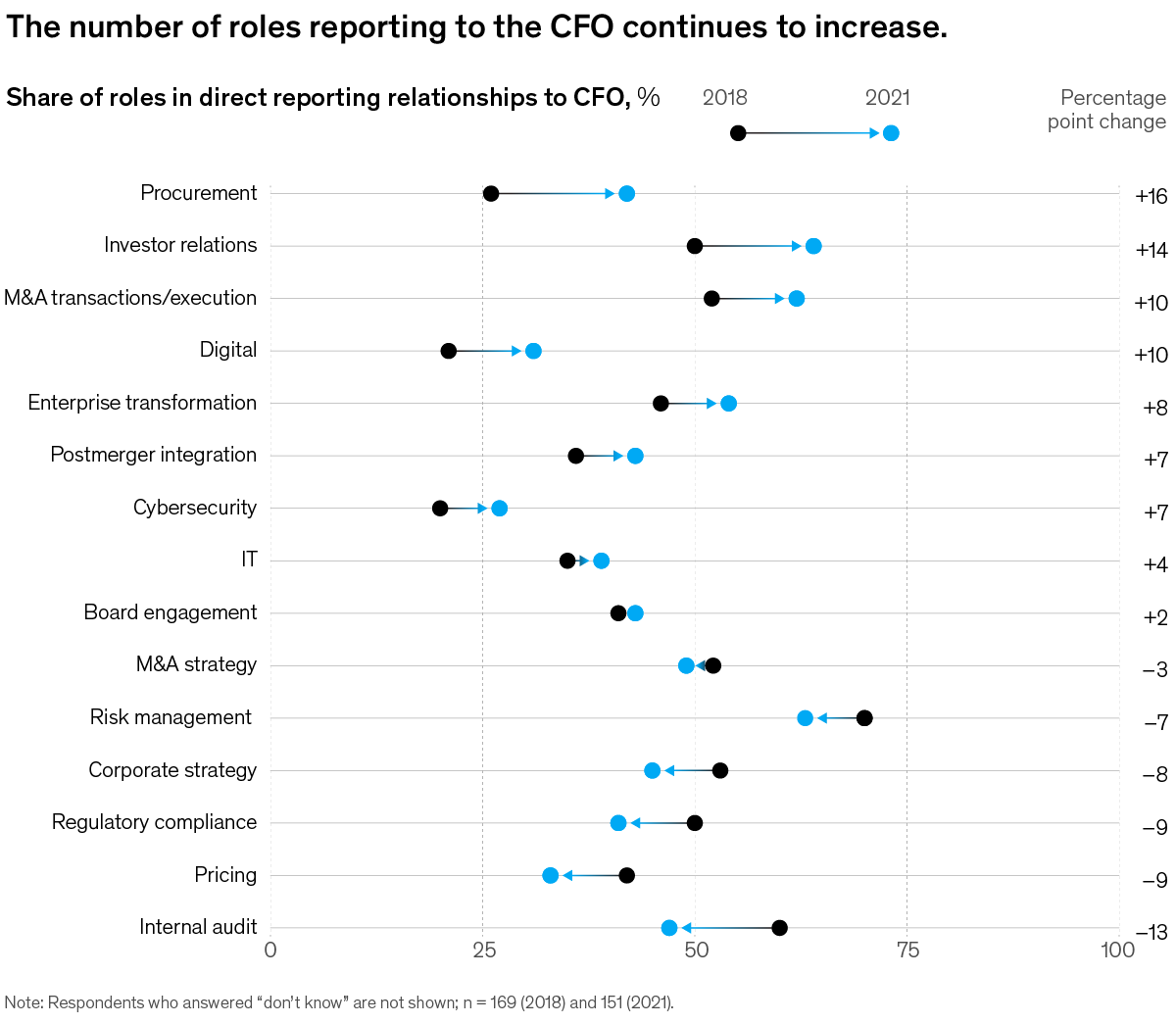
See today’s chart 
Also New 

Climate sustainability in retail: Who will pay? Although the path to decarbonization remains unclear, retailers can prepare by better understanding how costs could be distributed along the value chain. Strive for progress 
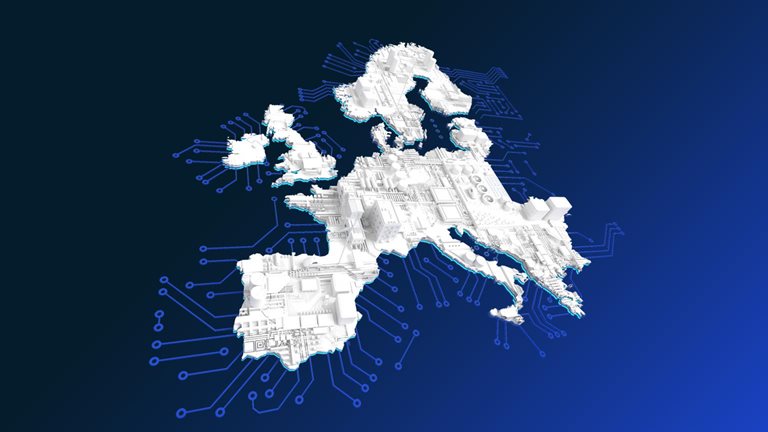

Securing Europe’s future beyond energy: Addressing its corporate and technology gap European leaders have shown great resolve in their initial response at scale and speed to the war in Ukraine. They will need to build the same momentum to face the region’s slow-motion corporate and technology crisis. An estimated €2 trillion to €4 trillion of annual value could be at stake—six times the amount needed for the net-zero transition—and with it Europe’s long-term prosperity and strategic autonomy. A program of 11 actions can turn the tide. Understand regional trends 


Delivering on the promise of federal infrastructure funds in states Thanks to the combined impacts of the Bipartisan Infrastructure Law and pandemic-related recovery bills, states and localities could have a meaningful effect on lives and livelihoods. 4 goals to consider 


Follow our thinking 



Share these insights Did you enjoy this newsletter? Forward it to colleagues and friends so they can subscribe too.
Was this issue forwarded to you? Sign up for it and sample our 40+ other free email subscriptions here.This email contains information about McKinsey’s research, insights, services, or events. By opening our emails or clicking on links, you agree to our use of cookies and web tracking technology. For more information on how we use and protect your information, please review our privacy policy. You received this email because you subscribed to the Daily Read newsletter. Manage subscriptions | Unsubscribe Copyright © 2022 | McKinsey & Company, 3 World Trade Center, 175 Greenwich Street, New York, NY 10007
by "McKinsey Daily Read" <publishing@email.mckinsey.com> - 07:29 - 12 May 2022 -
[Live Webinar] How to Create an Optimized API Development Process
Join to learn some of best practices in API development.Hi there,
Successful digital strategies rely on delivering quality and consistent APIs. To do so, you need an integrated and optimized API development workflow that ensures quality while improving efficiency.
With SmartBear, customers can launch a scalable API program with a central platform for OpenAPI standards, API design, and collaboration, coupled with a single UI for functional, performance, and security testing. With our full suite of API development and testing tools, you can deliver high-quality APIs at speed and scale.
As leaders in API Development, we’ve shown thousands of API developers and testers new and exciting ways to build efficiency and scale into their API development processes.
Join us on May 18th for this informative session as we review some best practices in API development where you’ll learn how to:- Enforce API standards across your organization
- Reduce API development time and effort
- Improve overall API quality
How to Create an Optimized API Development Process
Live on May 18th
Can't make the live session? Register and we will send you the recording!
We hope you can join us,
Molly
This email was sent to info@learn.odoo.com by SmartBear Software, 450 Artisan Way, Somerville, MA. 02145, 617.684.2600, www.smartbear.com. We hope you found this email of interest. However, we value your privacy. Please click here to Unsubscribe or manage mail preferences. Privacy Policy.
by "Molly from SmartBear" <readyapi-team@smartbearmail.com> - 11:01 - 12 May 2022 -
Investment in green energy is taking off in Asia. Which sectors play the biggest roles?
McKinsey&Company
Five technologies to watch .

Power players in Asia In the news • Fuel focused. The war in Ukraine is driving Europe to bolster its plans for alternative sources of energy, which may benefit China’s clean-energy companies. To transition from fossil fuels to clean energy, Europe expects to install 900 additional gigawatts of wind and solar power by 2030, an almost twofold increase from its initial plans. These efforts place manufacturers in China—where most of the parts for global solar equipment are produced—in a prime position to benefit from the increased demand. [Bloomberg] • Room for improvement. Although Asia–Pacific’s progress toward sustainability has some “bright spots,” such as the expansion of green and affordable energy, many Asian nations appear to be lagging behind other parts of the globe on sustainability efforts. “Without acceleration, this region is not set to achieve any of the sustainable development goals by 2030,” a UN official says. The COVID-19 crisis has set back progress in areas like sustainable production and climate action by 30 to 40 years, which is particularly troubling given the region’s exposure to climate change. [CNBC] 
Asia could see an increase of up to tenfold in green business start-up activity in the next few years, McKinsey analysis finds. 
On McKinsey.com • Eyes on the net-zero prize. More than 130 countries are working toward carbon neutrality, and consumers are noticing brands’ sustainability efforts. The myriad materials and equipment required to meet net-zero targets create opportunities for energy players worldwide. Since 2018, the number of investment deals involving green start-ups rose by 67%, with start-ups linked to sustainability attracting $2 billion in investments worldwide. Europe and North America currently lead in terms of investment size, but Asia is quickly catching up. • Green investment doubles in Asia. Led by electric vehicles and renewable energy, investment activities in green energy and related industries doubled over the past ten years in Asia. Investors there have the chance to capitalize on declining costs for renewable technologies, which have dipped 90% in the past decade. See our analysis of the best paths to growing green businesses in Asia, in addition to five technologies that are advancing fast. — Edited by Sarah Thuerk Go green and lean 
Was this forwarded to you? Sign up here. Or send us feedback — we’d love to hear from you. 

Follow our thinking 


This email contains information about McKinsey’s research, insights, services, or events. By opening our emails or clicking on links, you agree to our use of cookies and web tracking technology. For more information on how we use and protect your information, please review our privacy policy. You received this email because you subscribed to the On Point newsletter. Manage subscriptions | Unsubscribe Copyright © 2022 | McKinsey & Company, 3 World Trade Center, 175 Greenwich Street, New York, NY 10007
by "McKinsey On Point" <publishing@email.mckinsey.com> - 12:29 - 12 May 2022 -
Americans have new ideas. What they need is capital.
Intersection Subject Line
What discrimination costs America .
Share this email 



DELIVERING ON DIVERSITY, GENDER EQUALITY, AND INCLUSION 
This week, we consider the landmark confirmation of Dr. Lisa D. Cook to the US Federal Reserve Board. Plus: a look at who gets VC funding. THE ZEITGEIST New people, new ideas 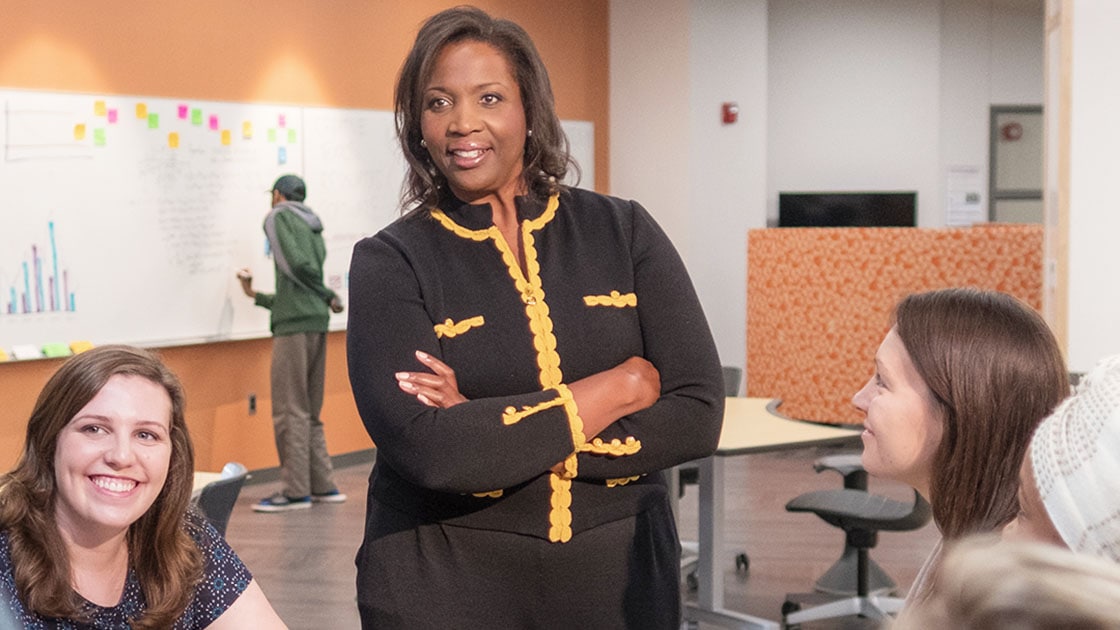
Photo courtesy of Michigan State University This week, the US Senate confirmed Dr. Lisa D. Cook as a member of the Federal Reserve Board. Dr. Cook will be the first Black woman to serve as a Fed governor. The Fed’s newest governor is an expert on innovation—and she says that racism and sexism are standing in the way of it. She often highlights the stats on US venture capital funding: only about 1 percent of VC funding goes to Black Americans. About 5 percent goes to women founders. And just 0.2 percent goes to Black women. The economist puts it plainly: “That’s got to change. That means that we are leaving a lot of ideas on the table.” After all, Cook says, “If you rely on the same old people, you are going to get the same old ideas.” McKinsey analysis shows that access to capital is a major roadblock for Black founders in the US. White entrepreneurs start their businesses with an average of over $100,000 of capital, including nearly $20,000 in outside equity such as venture capital. Black founders, on the other hand, start with about $35,000 in start-up capital—including just $500 of outside equity. Black-owned funds such as Harlem Capital and Backstage Capital (both founded in 2015 and referenced in this MGI report) are working to shift the status quo. Harlem Capital has set out to “change the face of entrepreneurship and create generational wealth for people of color and women.” Backstage Capital, which is headquartered in LA, describes investing in underrepresented founders as “the biggest opportunity in investment.” In the words of Arlan Hamilton, the fund’s managing partner: “We invest in the very best founders who identify as women, people of color, or LGBTQ+. I personally identify as all three.” Jewel Burks Solomon Making the innovation process more inclusive would boost the US economy at large. Dr. Cook estimates that GDP per capita could be up to 4.4 percent higher if more Black Americans and more women were able to participate in the innovation economy. In other words, she says, standards of living would be higher for everyone. Dr. Cook takes care to emphasize the connection: “We are not just calculating GDP for GDP’s sake, but to achieve higher living standards.” One American city—Atlanta—stands out as a site of inclusive innovation. That’s thanks in part to Georgia Tech, along with HBCUs, including Dr. Cook’s alma mater, Spelman College. Among the VC funds that are remaking the landscape is Atlanta-based Collab Capital, which is focused exclusively on Black founders. Launched in 2019, the firm closed its first $50 million fund last year. Managing partner Jewel Burks Solomon (pictured above) founded her own start-up in Atlanta back in 2013. “At the time,” she says, “most investors I was talking to were trying to convince me to move back to Silicon Valley or maybe to New York.” In fact, being in Atlanta meant better access to her customers—and to key talent. Editor’s note: It has been a pleasure leading Intersection. This is my last issue at the helm of the newsletter, so to all readers: thank you, and stay tuned! — Edited by Julia Arnous, an editor in McKinsey’s Boston office 

Follow our thinking 



Share these insights Did you enjoy this newsletter? Forward it to colleagues and friends so they can subscribe too.
Was this issue forwarded to you? Sign up for it and sample our 40+ other free email subscriptions here.This email contains information about McKinsey’s research, insights, services, or events. By opening our emails or clicking on links, you agree to our use of cookies and web tracking technology. For more information on how we use and protect your information, please review our privacy policy. You received this email because you subscribed to the Intersection newsletter. Manage subscriptions | Unsubscribe Copyright © 2022 | McKinsey & Company, 3 World Trade Center, 175 Greenwich Street, New York, NY 10007
by "McKinsey Intersection" <publishing@email.mckinsey.com> - 12:05 - 12 May 2022 -
Welcome to the first East Asia Newsletter Publication
Schneider Electric
East Asia Business NewsletterVenkatraman Swaminathan
(Vice President, Secure Power, East Asia Japan)It is my delight to welcome you all to our first newsletter of many, to help keep you updated on East Asia Business related topics. I hope you all utilize this newsletter to stay informed on the latest related affairs.
With this effort, the aim is to not only bridge the connection between the business partners, but also to work towards achieving our objectives of serving and connecting with our customers, while safeguarding our growth margin, and our cost containment, as well as to nurture the future business stream. Angela Wang
Angela Wang
Welcome to the first publication of East Asia Channel & Alliances Newsletter. 2022 is a year where we look forward to doing and growing more with our partners….Smart-UPS UltraNew APC lithium Smart-UPS Ultra delivers the highest power density in industry, with 5kW in 2U space and 3kW in 1U. Providing 5 years warranty, the 230V model will be available in Sept 2022. Edge MDC Partner ContestThere are two exciting East Asia Edge Competitions that are allowing its participants to get rewarded for Micro Data Center Projects.
Edge MDC Partner ContestThere are two exciting East Asia Edge Competitions that are allowing its participants to get rewarded for Micro Data Center Projects.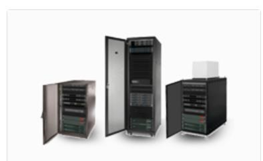 Local Edge Configurator (LEC)Utilize the LEC to save time, layout your complete IT Rack, design true solutions, and easily generate customer solutions reports.
Local Edge Configurator (LEC)Utilize the LEC to save time, layout your complete IT Rack, design true solutions, and easily generate customer solutions reports. eCommerce Success StoryKOL Influencer, SEOULIAN made tremendous sales breakthrough for South Korea e-commerce marketplace.
eCommerce Success StoryKOL Influencer, SEOULIAN made tremendous sales breakthrough for South Korea e-commerce marketplace.+ Lifecycle Services From energy and sustainability consulting to optimizing the life cycle of your assets, we have services to meet your business needs. Schneider Electric
46 Rungrojthanakul Building. 1st, 10th, 11th Floor, Ratchadapisek Road. Huaykwang
Bangkok - 10310, Thailand
Phone +662 617 5500© 2022 Schneider Electric, All Rights Reserved. Schneider Electric trademarks are owned by Schneider Electric or its affiliated companies in the United States and other countries. All other trademarks are property of their respective owners.
by "Schneider Electric" <reply@se.com> - 11:00 - 11 May 2022 -
Improving the childcare experience for working parents
the Daily read
Understand families’ needs .
Share this email 



AN ARTICLE A DAY, PICKED BY OUR EDITORS 
Companies need to start thinking differently about childcare requirements in the wake of the Great Attrition. Workable childcare options remain elusive for working parents, particularly working mothers, who are grappling with affordability, quality, reliability, convenience, and accessibility of childcare. As companies think about managing returning talent and attracting new employees, improving the childcare experience could be central to turning the Great Attrition into the Great Attraction. Check out a new article to see why supporting working families is a win-win. — Katherine Tam, digital editor, New York 
The childcare conundrum: How can companies ease working parents’ return to the office? The status quo work culture no longer works for most families—particularly those with very young children. But companies’ support for childcare can turn worker attrition into attraction. Here’s how. Understand families’ needs 

Quote of the Day “Allyship is stepping up in support of colleagues who are identified in another group: to support them, to create opportunities for them, to speak up when you see negative behaviors, and also to amplify and lift them up.” —Nora Gardner, McKinsey senior partner on the business case for diversity, equity, and inclusion in a recent episode of the McKinsey on Government podcast 
Chart of the Day 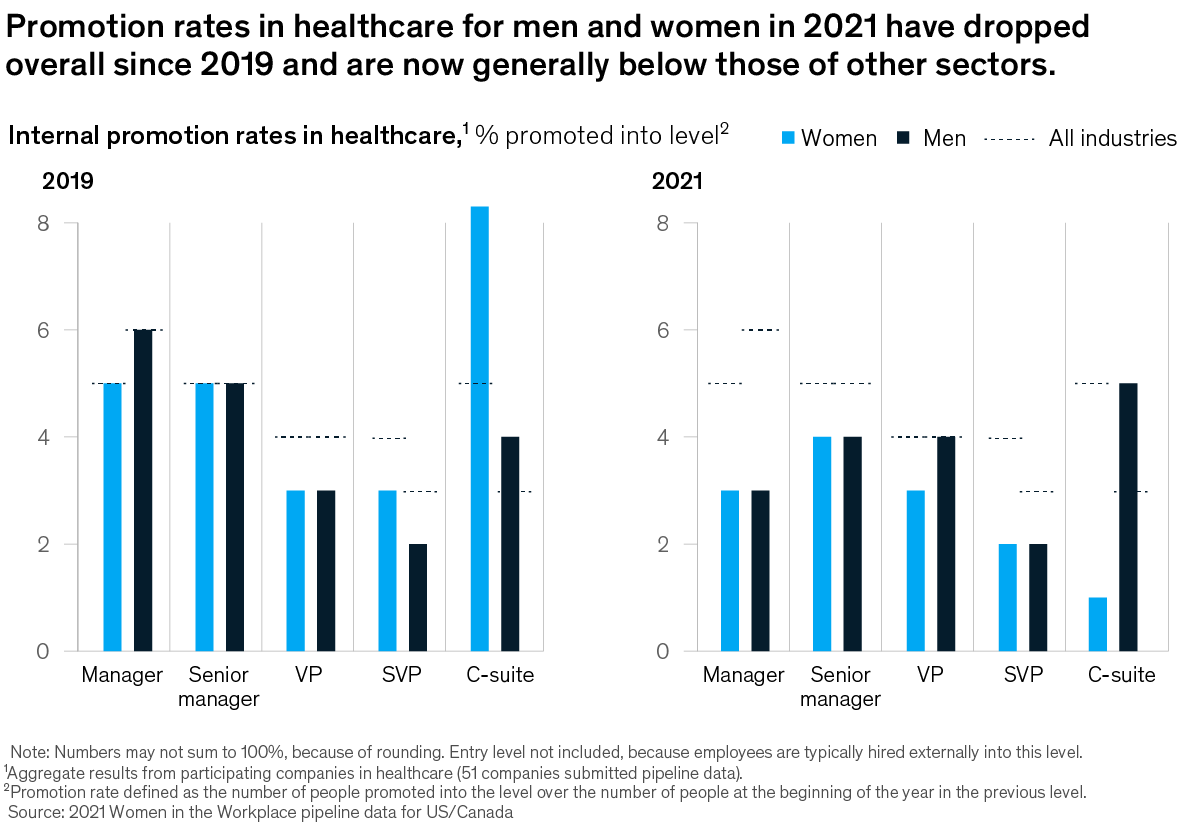
See today’s chart 
Also New 

Taking the pulse of the US consumer According to the latest Consumer Pulse survey, people across America are changing their shopping behaviors—and will continue to do so. Companies need to pay close attention. Adapt to change 


Author Talks: Tomorrow’s capitalist is socially conscious Fortune Media’s Alan Murray says stakeholder capitalism is here to stay. Find new purpose 
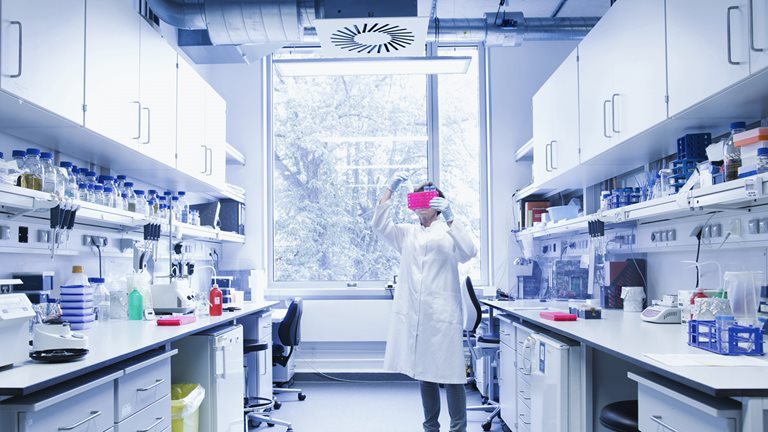

Transforming biopharma R&D at scale Transformations often struggle to scale up and make change stick. To achieve lasting impact, high-performing R&D organizations pay heed to the five outcomes that matter most. Understand the trajectory 


Follow our thinking 



Share these insights Did you enjoy this newsletter? Forward it to colleagues and friends so they can subscribe too.
Was this issue forwarded to you? Sign up for it and sample our 40+ other free email subscriptions here.This email contains information about McKinsey’s research, insights, services, or events. By opening our emails or clicking on links, you agree to our use of cookies and web tracking technology. For more information on how we use and protect your information, please review our privacy policy. You received this email because you subscribed to the Daily Read newsletter. Manage subscriptions | Unsubscribe Copyright © 2022 | McKinsey & Company, 3 World Trade Center, 175 Greenwich Street, New York, NY 10007
by "McKinsey Daily Read" <publishing@email.mckinsey.com> - 06:16 - 11 May 2022 -
Upcoming Planned Outage Alert
We have planned downtime on May 14thHi there,
On Saturday May 14th, SwaggerHub will be undergoing maintenance and will be unavailable starting at 4:00 AM EDT for approximately 5 hours. During this window, you will be unable to access SwaggerHub.
You can track the availability of SwaggerHub here: https://status.swaggerhub.com/
If you experience any downtime outside of this window or have any questions, please submit your issue here: https://support.smartbear.com/open-ticket/
We appreciate your patience and understanding.
Best,
The SwaggerHub Team
This email was sent to info@learn.odoo.com by SmartBear Software, 450 Artisan Way, Somerville, MA. 02145, 617.684.2600, www.smartbear.com. We hope you found this email of interest. However, we value your privacy. If you do not wish to receive future correspondence from us, please click here to manage mail preferences.
by "The SwaggerHub Team" <swaggerhub-team@smartbearmail.com> - 06:02 - 11 May 2022 -
Join me tomorrow to learn how to manage errors with New Relic
Hi MD
It's Phil Weber, senior technical training specialist at New Relic University, here. I wanted to make sure you're invited to the online workshop I'll host tomorrow, 12 May: Error Management in New Relic. The 90-minute hands-on workshop will walk you through the many ways New Relic can help you to manage errors in your applications.
Register for the workshop to learn how to configure and manage errors in APM, browser, and mobile applications. You will also learn how to use New Relic Errors Inbox to proactively detect, triage, and act on errors across your application stack, all in one place. While I recommend attending the live workshop, you can also register to be emailed the recording. If you attend live, you can claim a complimentary New Relic water bottle as a thank you.*
Phil Weber
Senior Technical Training Specialist
New Relic
*You can find the list of countries we can ship swag to on the workshop registration page.
This email was sent to info@learn.odoo.com as a result of subscribing or providing consent to receive marketing communications from New Relic. You can tailor your email preferences at any time here.Privacy Policy © 2008-21 New Relic, Inc. All rights reserved
by "Phil Weber, New Relic" <emeamarketing@newrelic.com> - 04:05 - 11 May 2022 -
Hiring? Look to your existing employees first.
McKinsey&Company
Staving off attrition .

Acting on attrition In the news • The gray resignation. Of the five million US workers who left their jobs during the COVID-19 pandemic, the majority—nearly 70%—were 55+. In the UK, meanwhile, the employment rate of over-50 workers fell twice as much as that of workers aged 25 to 49 in 2020. Older workers are leaving the workforce at high rates, reversing a prepandemic trend of older workforces and leaving behind substantive skills shortages. [FT] • The great job switch. About 64% of recent job switchers report that their new job pays more, and nearly 9% say that they’re earning at least 50% more, according to a recent survey of more than 2,000 workers in the US. The job-switching trend is expected to continue: one-fifth of workers aged 25 to 54 expect to leave their current job within a year, and one-fourth expect to stay just one or two years. [WSJ] 
“Across the board, you see workers saying … if I’m going to go to work, it actually needs to matter.” 
On McKinsey.com • Acute talent shortage. Workers want more flexibility, more career mobility, more money, and—crucially—greater purpose. STEM [science, technology, engineering, and mathematics] workers especially are leaving their jobs for similar ones that pay more. The ongoing talent shortage is real and may get worse. But as leaders go on the lookout for talent during this Great Attrition, they may be overlooking their best internal talent. • Go internal. McKinsey’s Emily Field, Bryan Hancock, and Bill Schaninger discuss on a recent episode of McKinsey Talks Talent how an internal talent marketplace—an AI-enabled platform that matches openings with internal employees—could help organizations bridge talent supply and demand. Such a marketplace, they posit, can democratize the hiring process and reduce bias by creating more transparency into relevant jobs. The benefits are massive: workers can move into well-fitting internal roles, while employers retain people rather than watch them leave. — Edited by Justine Jablonska Make the match 
Was this forwarded to you? Sign up here. Or send us feedback — we’d love to hear from you. 

Follow our thinking 


This email contains information about McKinsey’s research, insights, services, or events. By opening our emails or clicking on links, you agree to our use of cookies and web tracking technology. For more information on how we use and protect your information, please review our privacy policy. You received this email because you subscribed to the On Point newsletter. Manage subscriptions | Unsubscribe Copyright © 2022 | McKinsey & Company, 3 World Trade Center, 175 Greenwich Street, New York, NY 10007
by "McKinsey On Point" <publishing@email.mckinsey.com> - 10:09 - 10 May 2022 -
War in Ukraine: Twelve disruptions changing the world
the Daily read
Navigate the crisis .
Share this email 



AN ARTICLE A DAY, PICKED BY OUR EDITORS 
As the world grapples with the devastating effects of the war in Ukraine, there is much uncertainty on what the future holds. Amid these challenges, it’s crucial to understand how short- and mid-term disruptions—related to the humanitarian crisis, energy dynamics, food security, supply chain management, and more—are affecting lives and livelihoods. A new data-driven article dives deeper with 12 charts on the most pressing issues, offering a useful lens for companies and leaders during scenario planning and other efforts. Don’t miss it. — Joyce Yoo, digital editor, New York 
War in Ukraine: Twelve disruptions changing the world The war is devastating lives and roiling markets. Here we track the disruptions that seem likely to shape lives and livelihoods, beyond the immediate crisis. Navigate the crisis 

Quote of the Day “I think what CEOs are learning is that the option of just saying nothing is going away. And sometimes it’s pretty complicated to say, ‘Hey, this is a value we stand for, but we don’t want to be in a political fight.’ Because this is all so new… a lot of companies are still trying to figure out how to make their way through that thicket of issues.” —Alan Murray, CEO of Fortune Media, on how business leaders handle non-core business issues in a recent Author Talks interview 
Chart of the Day 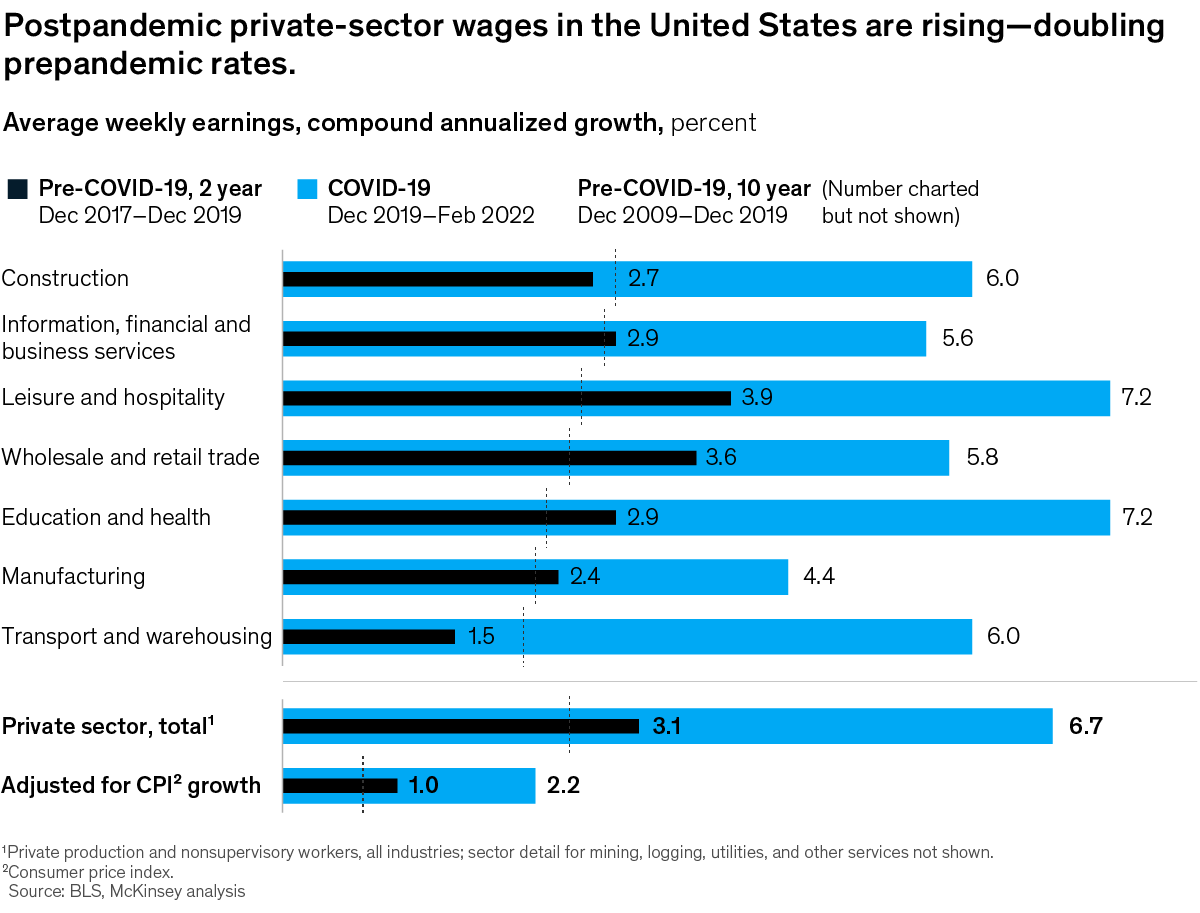
See today’s chart 
Also New 

Reimagining the future of financial-services headquarters The stakes are high for financial-services firms to reorient their offices around learning, inclusion, and innovation. Keep up 


When—and how—to prepare for post-quantum cryptography While quantum computers may not be able to crack conventional encryption protocols until 2030, many cybersecurity and risk managers should evaluate their options now. Evaluate your options 


Navigating America’s net-zero frontier: A guide for business leaders The US government has a goal: net-zero emissions by 2050. Our analysis maps out a pathway to this net-zero frontier—and the growth opportunities that $27 trillion of capital spending could create. Achieve climate solutions 


Follow our thinking 



Share these insights Did you enjoy this newsletter? Forward it to colleagues and friends so they can subscribe too.
Was this issue forwarded to you? Sign up for it and sample our 40+ other free email subscriptions here.This email contains information about McKinsey’s research, insights, services, or events. By opening our emails or clicking on links, you agree to our use of cookies and web tracking technology. For more information on how we use and protect your information, please review our privacy policy. You received this email because you subscribed to the Daily Read newsletter. Manage subscriptions | Unsubscribe Copyright © 2022 | McKinsey & Company, 3 World Trade Center, 175 Greenwich Street, New York, NY 10007
by "McKinsey Daily Read" <publishing@email.mckinsey.com> - 06:50 - 10 May 2022 -
How will global capital shift in the race to net zero?
McKinsey Quarterly
Get your Five Fifty .
The Great Reallocation After years of companies playing defense with sustainability, the landscape has shifted to an emerging growth opportunity—for those savvy enough to seize it. 
Get your briefing 
A shift in spending from high- to low-emissions assets could create the largest reallocation of capital in history—a potential boon for the environment and the economy alike. 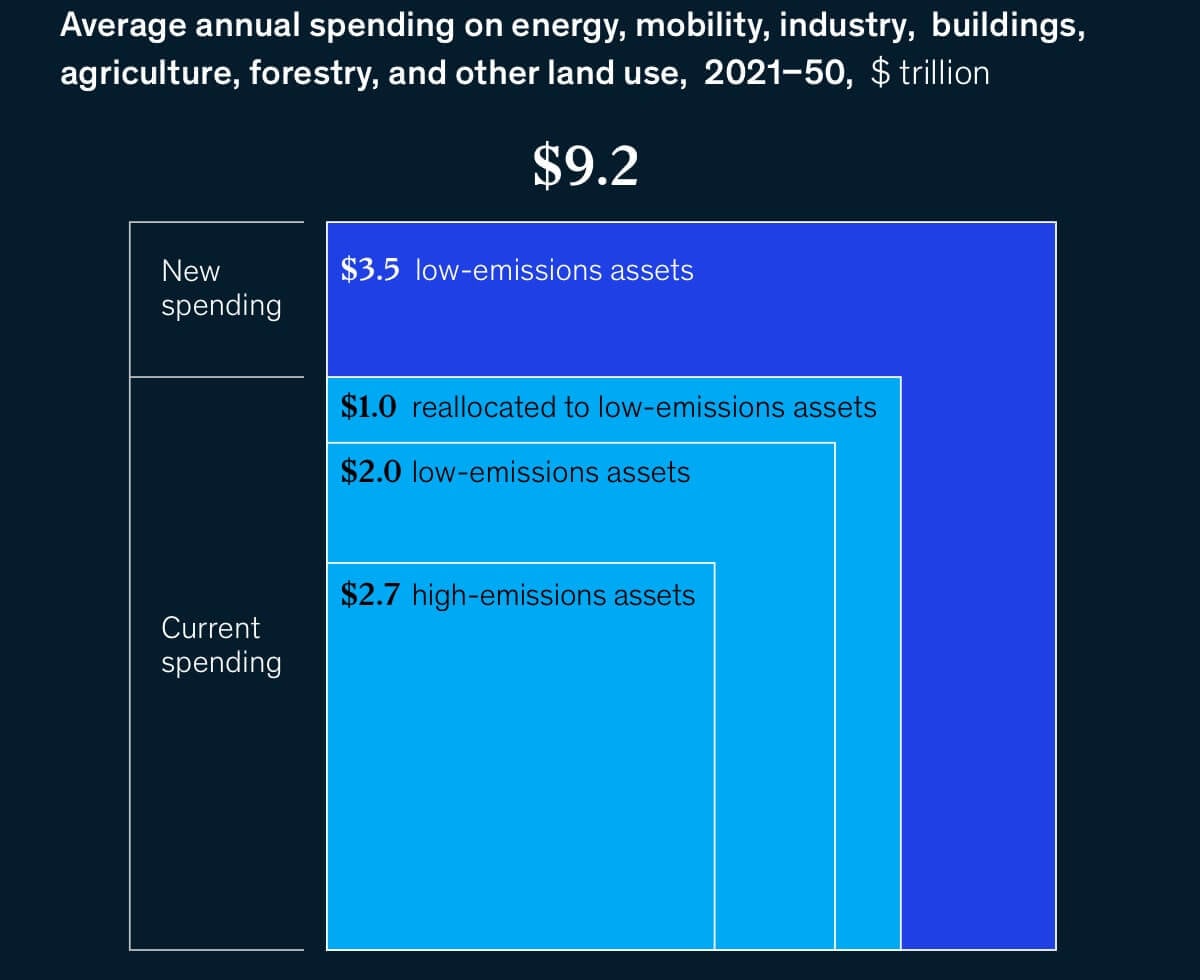

Get spending 


Follow our thinking 


This email contains information about McKinsey’s research, insights, services, or events. By opening our emails or clicking on links, you agree to our use of cookies and web tracking technology. For more information on how we use and protect your information, please review our privacy policy. You received this email because you subscribed to our McKinsey Quarterly Five Fifty alert list. Manage subscriptions | Unsubscribe Copyright © 2022 | McKinsey & Company, 3 World Trade Center, 175 Greenwich Street, New York, NY 10007
by "McKinsey Quarterly Five Fifty" <publishing@email.mckinsey.com> - 02:04 - 10 May 2022 -
Climate tech offers hope, but only if enough investment is deployed
McKinsey&Company
Techie fixes for climate change .

Cool climate tech In the news • Deus ex machina. Technology got us into this mess, but it also might get us out of it. Energy experts point to tech with the potential to either slow or reverse climate change. Ground-source heat pumps and high-efficiency air conditioners offer more efficient heating and cooling. Direct air capture can remove carbon dioxide from the atmosphere and can operate in any location. Next-generation nuclear power plants and clean electric grids are not fantasies but real options currently being built. [WSJ] • Mind the (funding) gap. Cryptocurrency, the metaverse, and NFTs excite investors looking for the next big thing. That’s a problem for European companies aspiring to raise money for viable climate-change solutions. Investors get excited about start-ups, but funds tend to dry up at the scaling phase that could convert an idea for a better battery or sustainable aviation fuel into a game changer. European companies say that investors will only pony up the hundreds of millions of dollars needed if regulations compel the use of sustainable products and systems. [NYT] 
Scaling up interdependent climate technologies often requires a more cooperative approach than businesses might be accustomed to. 
On McKinsey.com • Great need. To reach net zero by 2050, capital spending on low-emission equipment and infrastructure would need to average about $6.5 trillion a year. The annual production of clean hydrogen would need to increase more than sevenfold, requiring an additional $540 billion of investment. The global capacity of long-duration energy storage must increase by a factor of 400 by 2040, which will depend on innovations in chemical, electrochemical, mechanical, and thermal technologies. • Cooperate to compete. Climate technologies are interdependent, so competing in these markets often requires cooperation across value chains and industrial ecosystems. The success of climate technologies, including green methanol, green hydrogen, green steel, and carbon capture, depends on first being able to generate and store renewable electricity. Read on to learn why executives shouldn’t wait for a supportive ecosystem to form, and how they can gain big first-mover advantages. — Edited by Katy McLaughlin Accelerate climate tech 
Was this forwarded to you? Sign up here. Or send us feedback — we’d love to hear from you. 

Follow our thinking 


This email contains information about McKinsey’s research, insights, services, or events. By opening our emails or clicking on links, you agree to our use of cookies and web tracking technology. For more information on how we use and protect your information, please review our privacy policy. You received this email because you subscribed to the On Point newsletter. Manage subscriptions | Unsubscribe Copyright © 2022 | McKinsey & Company, 3 World Trade Center, 175 Greenwich Street, New York, NY 10007
by "McKinsey On Point" <publishing@email.mckinsey.com> - 12:35 - 10 May 2022 -
Reinventing office spaces for financial-services firms
the Daily read
Keep up .
Share this email 



AN ARTICLE A DAY, PICKED BY OUR EDITORS 
For financial-services firms, physical spaces—including flagship offices, branches, and satellite offices—have traditionally been an important part of the workforce’s experience. But over the past couple of years, the way we think about physical offices has changed—and now is the time for financial-services firms to reinvent the concept of the headquarters and prepare for the future. Want to learn more about how to future-proof your office? Check out a new article, which outlines ten bold moves that can reorient offices around learning, inclusion, and entrepreneurial collaboration. — Joyce Yoo, digital editor, New York 
Reimagining the future of financial-services headquarters The stakes are high for financial-services firms to reorient their offices around learning, inclusion, and innovation. Keep up 

Quote of the Day “Being a mother has helped me to become a better professional. I’m far more efficient and much more comfortable with uncertainty. I have become much more aware of my teams’ and clients’ needs, feelings, and unstated thoughts. Motherhood has opened my mind and heart.” —Valentina Ibarra, McKinsey partner, on being a working mother in “Parent, employee, all of the above? Eight working mothers on the realities of post-pandemic life” 
Chart of the Day 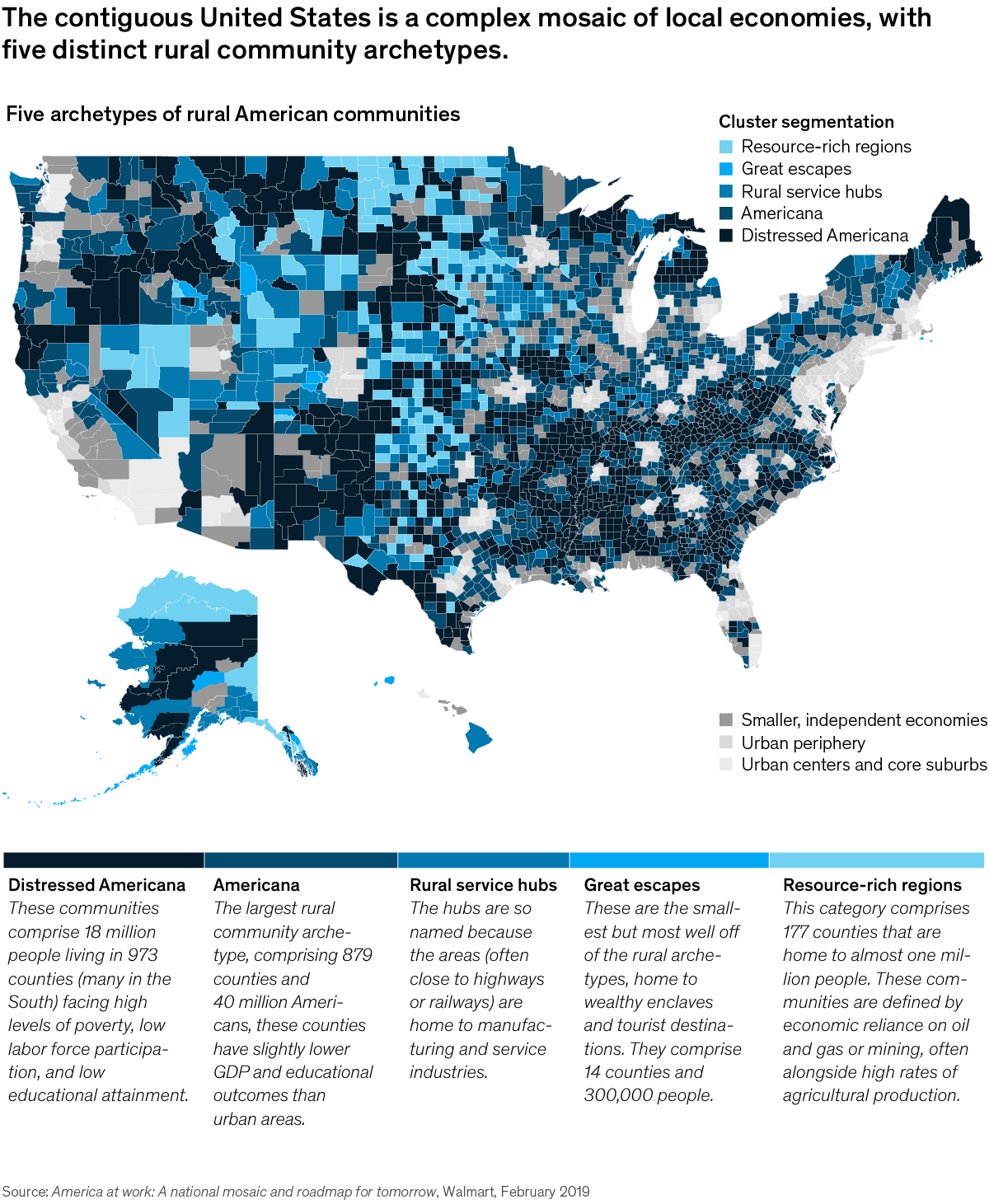
See today’s chart 
Also New 

Meeting the challenge of moms’ ‘double double shift’ at home and work As the United States emerges from the pandemic, how can businesses build a more inclusive working environment to improve outcomes for women in the workforce? Listen and learn 


Forward Thinking on democratizing technology with Anne-Marie Imafidon “Having a computer science degree should not be a prerequisite for being one of the only people in control of what happens next. It’s about democratizing. It’s about giving folks agency so we can make collective decisions about what happens next rather than it being that technical power race. I don’t know if we can call it race to the—I’m going to call it the bottom, race to the dystopia.” Break barriers 
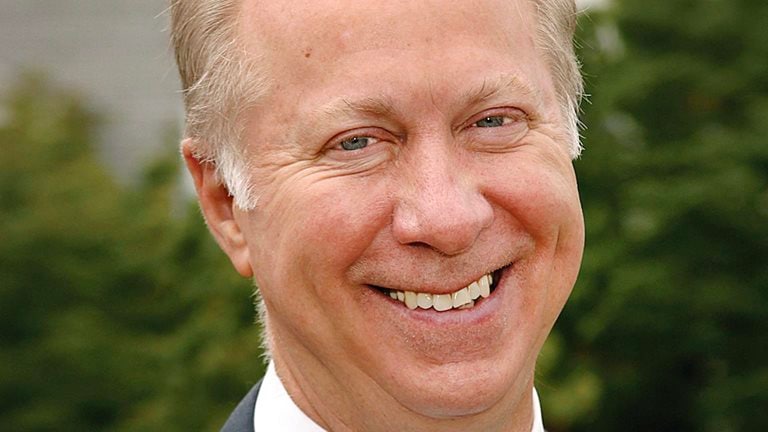

Author Talks: It’s time to pass the baton To solve decades-old issues, former presidential adviser David Gergen says we need fresh leadership—so he wrote a playbook to guide the next generation of problem-solvers. Address the issues 


Follow our thinking 



Share these insights Did you enjoy this newsletter? Forward it to colleagues and friends so they can subscribe too.
Was this issue forwarded to you? Sign up for it and sample our 40+ other free email subscriptions here.This email contains information about McKinsey’s research, insights, services, or events. By opening our emails or clicking on links, you agree to our use of cookies and web tracking technology. For more information on how we use and protect your information, please review our privacy policy. You received this email because you subscribed to the Daily Read newsletter. Manage subscriptions | Unsubscribe Copyright © 2022 | McKinsey & Company, 3 World Trade Center, 175 Greenwich Street, New York, NY 10007
by "McKinsey Daily Read" <publishing@email.mckinsey.com> - 06:26 - 9 May 2022 -
It only takes 5 minutes to get visibility across your stack
It looks like you haven’t logged in recently, is visibility into your apps and systems as good as you think it is? It only takes 5 minutes to connect the dots and drive performance across your entire stack.
Get started with our new guided install, an intelligent and automated instrumentation experience for your applications and infrastructure. As a reminder, you have 100GB of free data each month and one free full access user to monitor and troubleshoot your apps and systems.
INSTALL NOW If you have questions about using New Relic, visit the Explorers Hub where our Relics and the Data Nerd Community come together to share the latest information, get help with troubleshooting problems, and find the inside track to getting the most out of the platform.
Yours in observability,MaxNew Relic
188 Spear Street, San Francisco, CA 94105 US
by "Max Francisco from New Relic" <mfrancisco@newrelic.com> - 12:02 - 9 May 2022 -
Forward Thinking on democratizing technology with Anne-Marie Imafidon
McKinsey&Company
Break barriers .
Share this email 



New from McKinsey Global Institute 
Forward Thinking on democratizing technology with Anne-Marie Imafidon “Having a computer science degree should not be a prerequisite for being one of the only people in control of what happens next. It’s about democratizing. It’s about giving folks agency so we can make collective decisions about what happens next rather than it being that technical power race. I don’t know if we can call it race to the—I’m going to call it the bottom, race to the dystopia.” Break barriers 


Explore this and future episodes of the McKinsey Global Institute’s Forward Thinking podcast on our site, and subscribe to ensure you never miss a new one. Subscribe via Apple Podcasts, Google Podcasts, Spotify, Stitcher, and Amazon Music. 
Related Reading 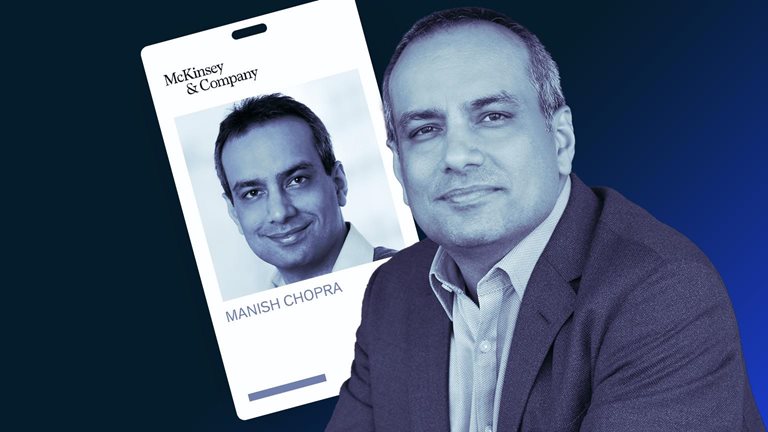
My Rookie Moment: Watch epsiode 8, Meeting with CEOs 

Explore McKinsey on Books 


Follow our thinking 


McKinsey Insights - Get our latest
thinking on your iPhone, iPad, or Android


Share these insights Did you enjoy this newsletter? Forward it to colleagues and friends so they can subscribe too.
Was this issue forwarded to you? Sign up for it and sample our 40+ other free email subscriptions here.This email contains information about McKinsey’s research, insights, services, or events. By opening our emails or clicking on links, you agree to our use of cookies and web tracking technology. For more information on how we use and protect your information, please review our privacy policy. You received this email because you subscribed to our McKinsey Global Institute alert list. Manage subscriptions | Unsubscribe Copyright © 2022 | McKinsey & Company, 3 World Trade Center, 175 Greenwich Street, New York, NY 10007
by "McKinsey Global Institute" <publishing@email.mckinsey.com> - 10:10 - 9 May 2022




